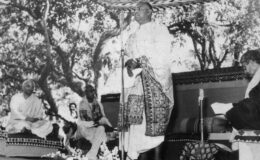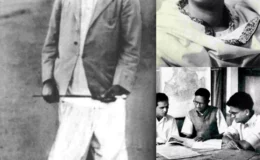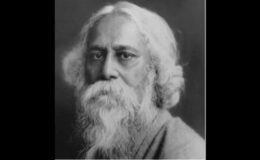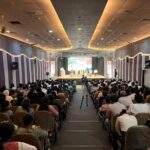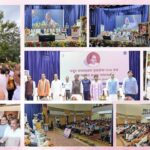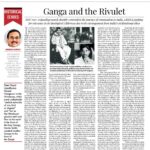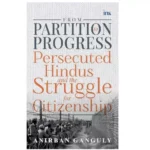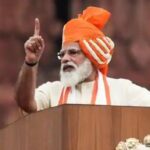NO SILENCE OF LAMBS IN MAMATA’S BENGAL
- By : Anirban Ganguly
- Category : Articles
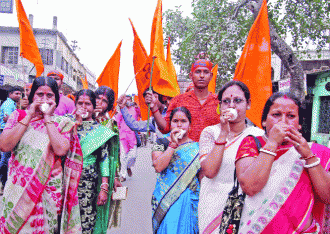
This Ram Navami was a sure sign that West Bengal was trying to emerge out of the cycle of degeneration it has been consigned to. The response to a call for celebrating the occasion was a re-assertion of Hindu right
In the first week of April, Ram Navami was celebrated with great fervour across Bengal, as it has been for years. But what was surprising and striking was the manner in which the habitually anti-Hindu Trinamool Congress and its leader Mamata Banerjee, one of the foremost among the diminishing tribes of adepts at appeasement politics, began chanting the name of Ram and claiming that they too were Ram worshippers and had the right of worshipping and propitiating him. But then this is the quintessential Mamata Banerjee, opportunistic, chameleon like and ready to change track whenever the occasion demands it.
However, with an increasingly mature electorate in the State, people are beginning to see through Banerjee’s counterfeit faith and political postures. There is a growing realisation that she has, since she came to power in 2011, ridden roughshod over the sentiments of the Hindus, has time and again taken them for granted and has allowed a continuous cycle of party abetted violence to be unleashed against Hindus, especially those who hold and work for opposing political formations — in this case, the BJP.
What shook the Trinamool Congress establishment was the Statewide fervour demonstrated in worshipping Ram. Hindus of Bengal came out in large numbers defying threats and curbs to celebrate the occasion with great fanfare and colour. Their democratic right allows them to do that and Mamata Banerjee’s West Bengal is not beyond the pale of the Constitution of India and its democratic framework. What is of particular concern for Banerjee and her mullah-appeasing political hangers-on is the reality of the rise of a Hindu consciousness in the State. The partition-afflicted Bengali Hindu has habitually been a forgiving species and has had to undergo a series of misfortunes and challenges starting from the day Jawaharlal Nehru inked the Delhi Pact and continuing with his refusal to carry out a total exchange of population as was done in the case of the Western frontier.
But this Ram Navami was a sure sign that West Bengal was very gradually trying to emerge out of the cycle of degeneration that it has been consigned to. The response to the call for celebrating the occasion was a re-assertion of the Hindus’ right to exist on the land that was historically saved for them. That does not mean the right of existence or of denial of the other; this assertion and new found voice actually expresses an existential anguish, built up and suppressed for over six decades and repeatedly denied space, voice. It is the spurt of that nationalism which had, ever since the early fifties, begun to become a bad word in the State’s political lexicon and was eventually banished from the mid-1970s onwards, when to talk of the historic raison d’être of West Bengal, to discuss the history of its formation and to re-examine its journey, was taboo.
Three decades of communist rule suppressed the memories of that phase and six years of Trinamool Congress rule has tried to physically and ideationally restructure and redraw that space and memory. But this April, that sly and often crass restructuring has begun to see a response and a rejoinder.
The Gole Market coterie and Lyutens’s observers struggle to decipher or discern such a phenomenon. Far removed from the realities of Bengal, with little or no connection at the grassroots and with sources that are limited to the confines of Chowringhee, Park Street or the elite clubs of Calcutta, these people see an engineered communal phenomenon artificially created and planned by interested groups, they are incapable of absorbing the reality of a spontaneous response and re-assertion.
The Ram Navami episode has rattled Banerjee’s lumpens and her administration. Her Ministers and she herself has questioned the show of arms during the festivities. The symbolic display of arms during this celebrations have always happened and but has caught the attention of Mamata’s brigade this year simply because of the magnitude of the response to the call for celebrating the day. It was also symbolic of the fact that in Bengal, Hindus have been left to fend for themselves under Banerjee’s rule and, therefore, have to perforce be concerned with their own defence and security.
In the midst of this ongoing assessment and counter-assessments came the results of the by-poll to the Kanthi Dakshin segment, in which the BJP saw a sharp increase of 22 per cent in its vote share. It relegated the communists and the Congress to the third and fourth positions respectively. BJP president Amit Shah especially thanked the people of Bengal for making this wise choice.
The issue is not so much that the Trinamool Congress won the seat; it will perhaps keep winning for a while more. The larger issue is that of the BJP beginning to emerge as a credible alternative in the state and of the TMC’s politics of division and of appeasement taking a beating. Mamata put up a brave face and accused the BJP of colluding with the communists – it is one more among the many bizarre theories that she periodically spins for the consumption of her vacuous cadres.
The Congress and the communist parties in the State are fast turning into signboards while the TMC’s brazen abetment of the chit-fund mafia has come back to haunt most of its entire top leadership. On the one hand, the TMC has indulged in vote-bank politics, has allowed some of the most vicious elements like the Imam Barkati to thrive, has attempted to erase Bengaliness from the cultural mind and education map of the State. On the other, it has openly sided with and shielded rioters and the powerful chit-fund mafia, from both sections it has derived political resource and heft. Those most affected by these are the poor and the Hindus of Bengal — mostly again the poor and
the marginalised.
What Mamata Banerjee under-calculated and failed to gauge, however, is this tenacious re-assertion, this unwillingness to be taken for granted, this refusal to be brow-beaten, to be suppressed and to be hounded. While she is busy in trying to assiduously erase West Bengal’s existence, what Mamata Banerjee has just begun to perhaps realise is that the State’s nationalist core, a core that was long suppressed and undermined, has begun to re-assert itself. It is in such a re-assertion that lies Bengal’s salvation and Mamata Banerjee’s political undoing.

